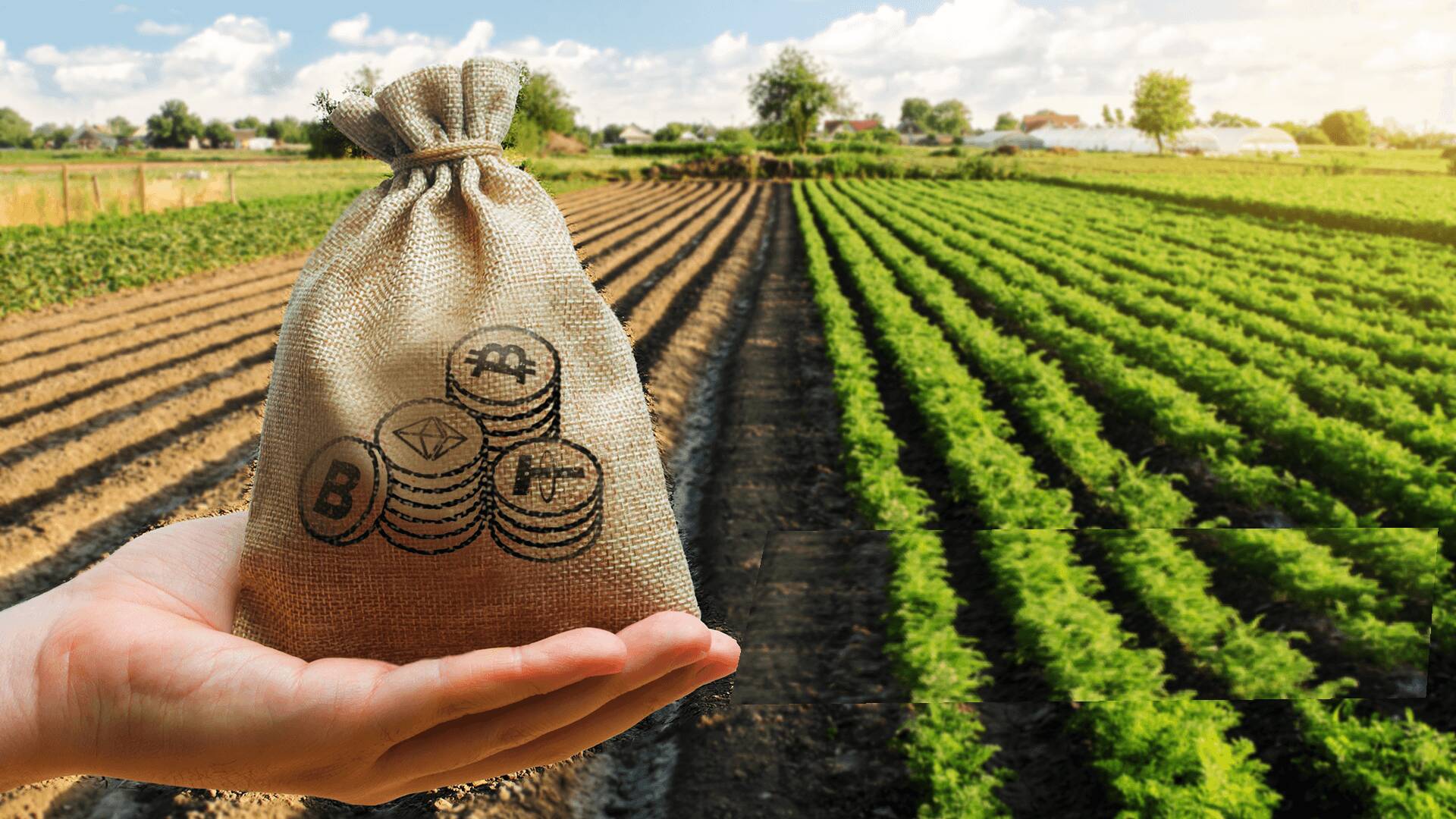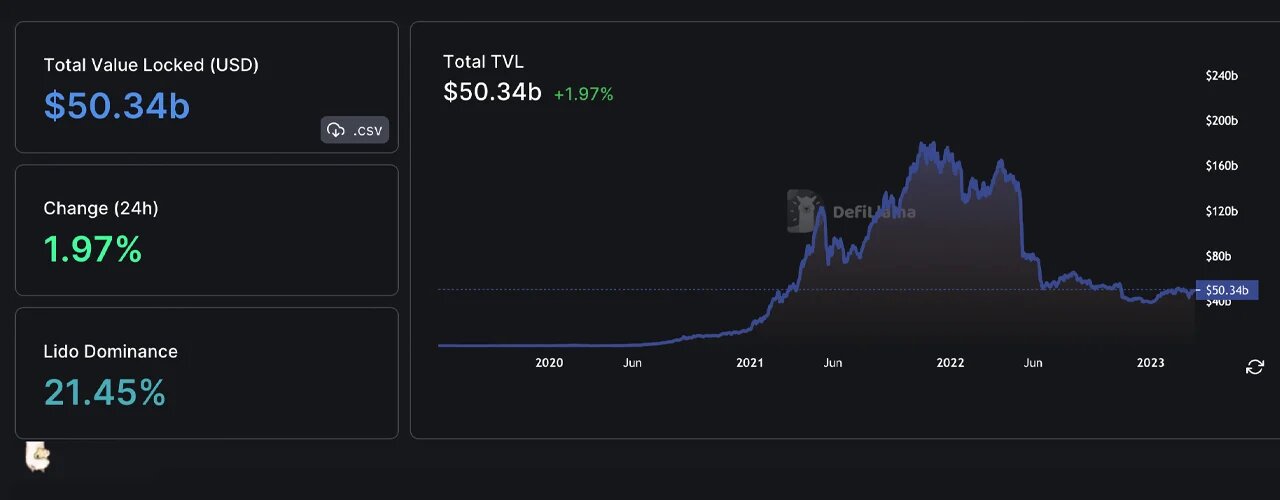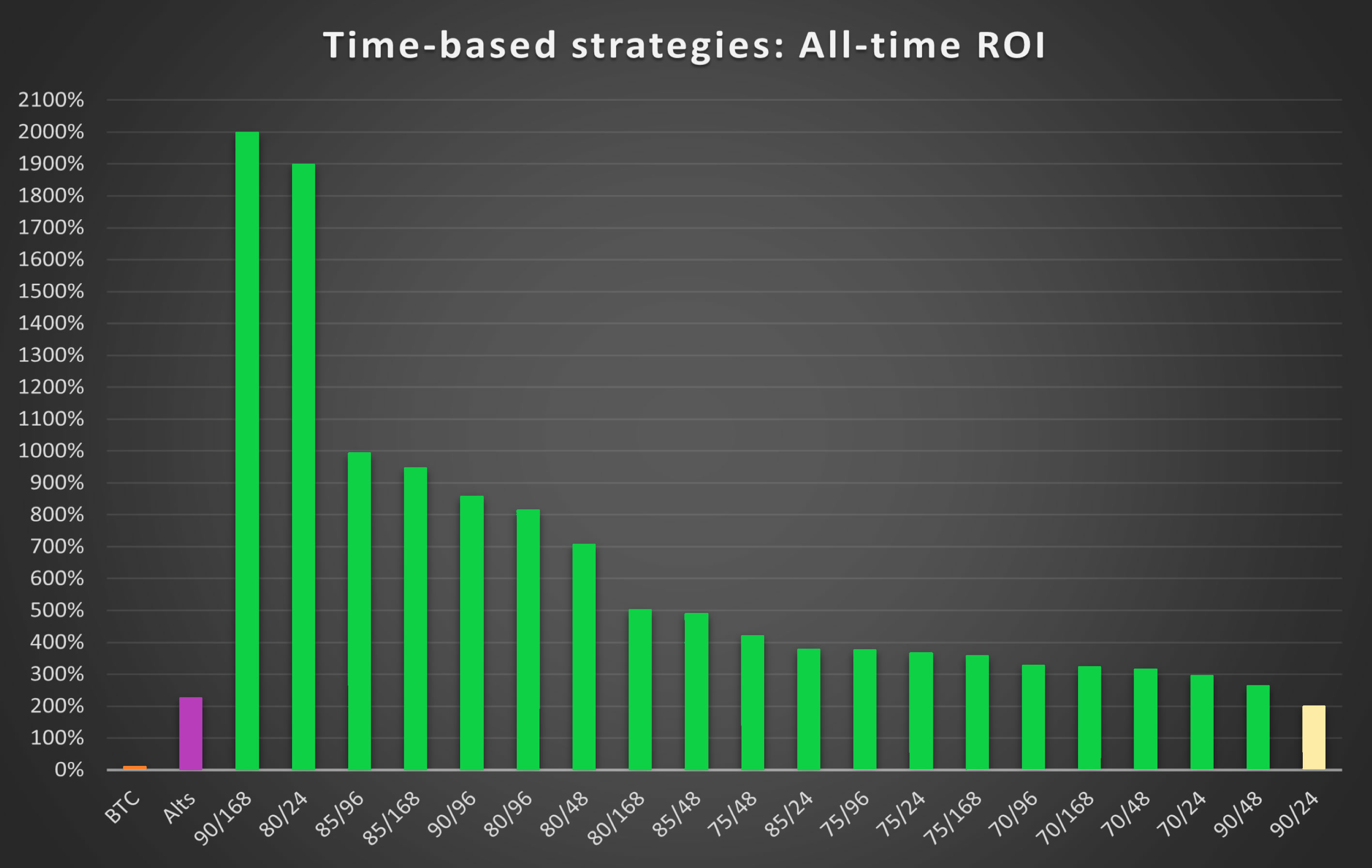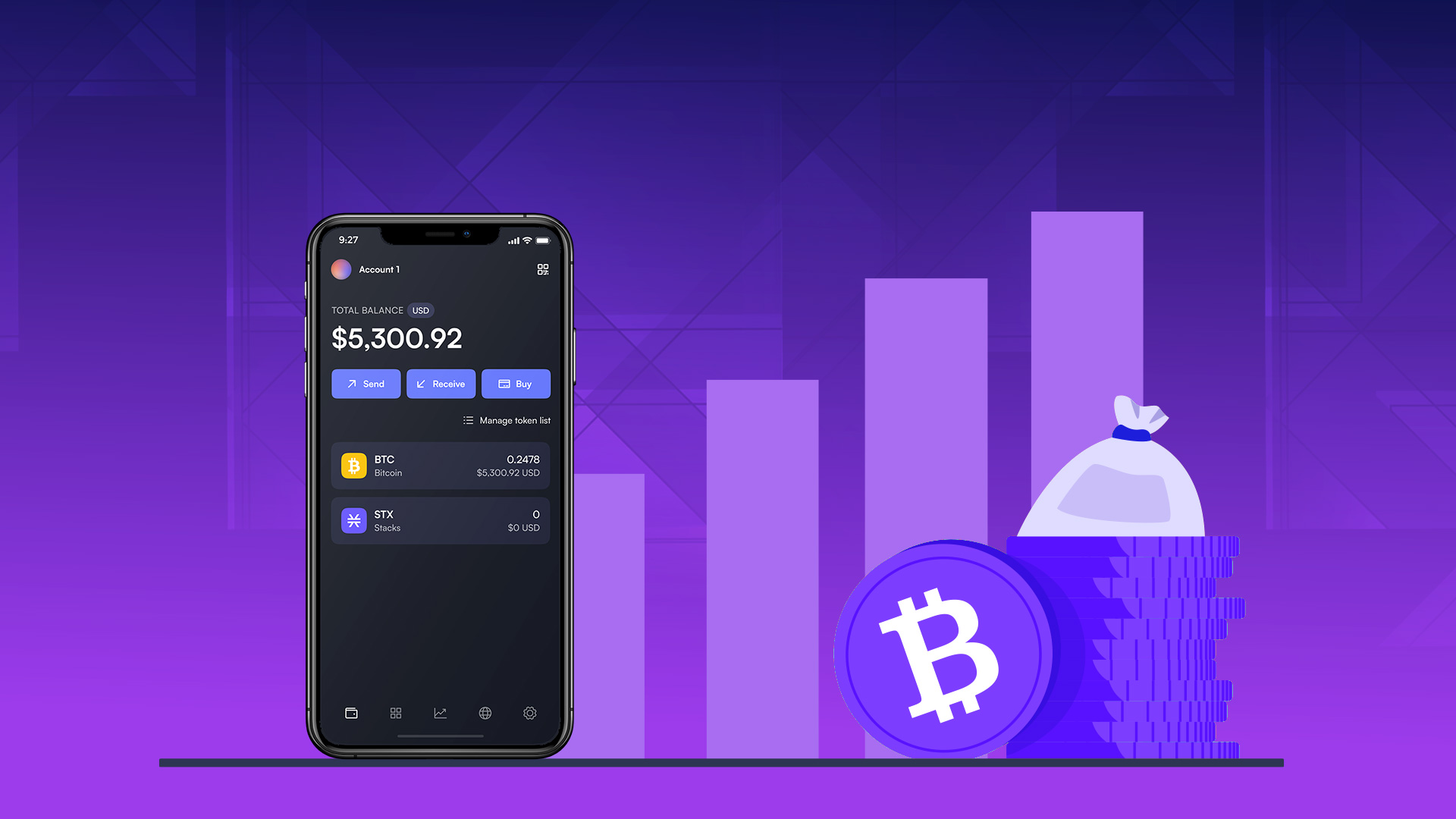Introduction
Welcome to the world of crypto yield farming, a trending phenomenon that offers an exciting way to earn passive income in the world of decentralized finance (DeFi). If you’re curious about this innovative concept and want to dive into the world of yield farming, then you’ve come to the right place! In this article, we’ll explore the ins and outs of crypto yield farming, how it works, its benefits, associated risks, popular platforms, and how you can get started.
Before we delve deeper, let’s first understand what yield farming actually means. In simple terms, yield farming involves staking or lending cryptocurrency assets to earn regular rewards or yields. These rewards can come in various forms, such as additional tokens, interest, or fees earned from participating in specific DeFi protocols.
The concept of yield farming gained popularity with the rise of decentralized finance platforms, where users can trade, lend, borrow, and earn passive income by utilizing their crypto assets. Yield farming takes advantage of the decentralized nature of blockchain technology, enabling users to participate directly in the DeFi protocols and earn rewards based on their contribution to the network.
One of the primary reasons yield farming has gained considerable attention is the potential for significantly higher returns compared to traditional banking or investment options. However, it’s important to note that with higher returns come higher risks, and understanding these risks is essential before diving into yield farming.
Throughout this article, we’ll explore the different aspects of yield farming, including how it works, its benefits, and the risks involved. We’ll also highlight some popular yield farming platforms that have gained traction in the DeFi space. By the end of this article, you’ll have a comprehensive understanding of yield farming and be equipped with the knowledge to start your own journey in this exciting realm.
What is Yield Farming
Yield farming, also known as liquidity mining, is a process that allows individuals to earn passive income by lending or staking their cryptocurrency assets in decentralized finance (DeFi) protocols. It involves providing liquidity to these platforms, enabling them to facilitate various financial activities such as lending, borrowing, and trading.
One of the fundamental principles of yield farming is the concept of “farming” or “harvesting” rewards. Users provide liquidity to a specific DeFi protocol by depositing their tokens into a liquidity pool. In return, they receive yield-bearing tokens, which represent their share of ownership in the liquidity pool. These yield-bearing tokens can be used or held to gain additional rewards over time.
The process of yield farming typically involves several steps. Firstly, users need to select a suitable DeFi platform that supports yield farming. Once they have chosen a platform, they need to deposit their desired crypto assets into a liquidity pool. These pools act as a collective source of liquidity for various DeFi functions.
After depositing their assets, users receive LP (liquidity provider) tokens that represent their proportionate share in the pool. For example, if someone contributes 10% of the liquidity in a pool, they would receive 10% of the LP tokens. These LP tokens can then be staked, or in some cases, re-staked in other pools to maximize potential returns.
As users’ deposits contribute to the liquidity of the protocol, they are rewarded with fees generated from the activities on the platform. These rewards are distributed in the form of additional tokens or interest earned on the staked assets. The specific reward structure may vary depending on the platform and the mechanisms implemented by the protocol.
Yield farming offers several advantages for participants. Firstly, it provides an opportunity to earn passive income through the utilization of idle crypto assets. Users can put their cryptocurrencies to work and generate returns without actively trading or engaging in complex investment strategies. Additionally, yield farming allows for diversification, as participants can allocate their assets to various protocols and potentially earn rewards from multiple sources simultaneously.
However, it’s crucial to note the inherent risks associated with yield farming. The crypto space is known for its volatility, and yield farming is no exception. Price fluctuations, smart contract vulnerabilities, and the potential for impermanent loss are factors that participants must consider. Therefore, it’s essential to conduct thorough research and exercise caution before diving into yield farming.
How does Yield Farming work
Yield farming operates on the principles of decentralized finance (DeFi), utilizing smart contracts to automate the process of providing liquidity and earning rewards. It involves a series of steps that participants follow to engage in yield farming and maximize their potential returns.
Firstly, participants select a suitable DeFi platform that supports yield farming. They then deposit their chosen crypto assets into a liquidity pool. These pools act as reserves of funds that facilitate various DeFi functions, such as lending and borrowing. By contributing to the liquidity pool, participants enable these functions to take place and earn rewards in return.
Once participants have deposited their assets, they receive liquidity provider (LP) tokens. These tokens represent their ownership share in the liquidity pool, proportionate to the amount they contributed. For example, if someone contributes 10% of the liquidity in a pool, they would receive 10% of the LP tokens.
After receiving LP tokens, participants have a few options. They can hold onto the LP tokens, which will gradually appreciate in value as the pool’s liquidity increases due to the contribution made. Alternatively, participants can stake their LP tokens, thereby giving up some of their ownership rights temporarily. Staking LP tokens allows participants to earn additional rewards.
The rewards earned in yield farming can come in various forms. Some platforms distribute additional tokens or platform-specific governance tokens as rewards. These tokens can be sold or held as a form of investment. Other platforms provide interest on the staked assets, enabling participants to earn passive income over time.
Another strategy employed in yield farming is the concept of yield optimization. Participants can take their LP tokens from one liquidity pool and stake them in another, thereby earning rewards from multiple sources. This process, known as “re-staking,” allows participants to maximize their potential returns and diversify their yield farming activities.
Yield farming operates on the principles of supply and demand. As more participants provide liquidity to a pool, the available rewards are typically distributed among a larger number of contributors, resulting in reduced individual yields. Conversely, if the demand for a particular liquidity pool decreases, individual yields might increase due to a reduced number of participants.
It’s important to note that yield farming involves risks. The cryptocurrency market is volatile, and price fluctuations can impact the value of deposited assets. Additionally, DeFi platforms may face smart contract vulnerabilities or security risks, potentially leading to potential loss of funds. Engaging in thorough research and understanding the risks involved is essential for participants looking to enter the world of yield farming.
Benefits of Yield Farming
Yield farming offers several advantages for participants in the decentralized finance (DeFi) ecosystem. Here are some key benefits:
1. Passive Income Generation: Yield farming provides an opportunity to earn passive income by putting idle crypto assets to work. Participants can generate returns by lending or staking their assets in liquidity pools and earning rewards in the form of additional tokens or interest.
2. Higher Returns than Traditional Finance: Yield farming often offers significantly higher returns compared to traditional banking or investment options. With the potential for double-digit or even triple-digit yields, participants can achieve attractive returns on their crypto holdings.
3. Diversification of Crypto Portfolio: Yield farming allows participants to diversify their crypto portfolios by allocating assets to various protocols. This enables them to earn rewards from multiple sources simultaneously and potentially mitigate risks associated with a single investment strategy or platform.
4. Exposure to Emerging Projects: By participating in yield farming, participants often gain early access to new and emerging DeFi projects. This provides an opportunity to invest in promising tokens or governance tokens that may have significant value in the future.
5. Empowerment and Ownership: Yield farming operates on the principles of decentralization, allowing participants to directly contribute to DeFi protocols and earn rewards based on their contributions. This empowers individuals by giving them control over their assets and the ability to earn income without relying on traditional financial intermediaries.
6. Staking Benefits: Some yield farming platforms offer additional benefits for staking their LP tokens or governance tokens. These benefits may include voting rights, discounts on transaction fees, or access to exclusive platform features. Staking can enhance participation and engagement within the DeFi ecosystem.
7. Liquidity Provision: Yield farming relies on participants providing liquidity to DeFi protocols. By doing so, participants help enhance the overall liquidity of the ecosystem, enabling other users to access borrowing, lending, and trading services more efficiently.
8. Flexibility and Accessibility: Yield farming is accessible to anyone with a cryptocurrency wallet and internet connection. Participants can start with small amounts of capital and gradually scale their involvement, making it inclusive and open to a wide range of individuals.
While yield farming offers enticing benefits, it’s important to approach it with caution. Participants should conduct thorough research, understand the associated risks, and exercise diligence when selecting platforms and managing their assets.
Risks of Yield Farming
While yield farming offers the potential for lucrative rewards, it’s important to be aware of the risks involved. Understanding and managing these risks is crucial for participants in the decentralized finance (DeFi) ecosystem. Here are some key risks associated with yield farming:
1. Market Volatility: The cryptocurrency market is known for its volatility, with prices that can fluctuate significantly in short periods. When the value of deposited assets experiences sharp declines, it can negatively impact the overall yield and potentially result in a loss of principal.
2. Impermanent Loss: Impermanent loss occurs when the value of assets in a liquidity pool fluctuates compared to an external benchmark. As a result, when liquidity providers withdraw their assets, they might receive a lower value than initially deposited. Understanding and managing impermanent loss is essential to minimize potential losses.
3. Smart Contract Risks: Yield farming relies on smart contracts that execute the transactional logic of DeFi platforms. However, these contracts can be susceptible to coding errors, vulnerabilities, or even hacking attempts. Participants should thoroughly assess the security measures implemented by the platforms they engage with to mitigate these risks.
4. Platform Risks: Not all DeFi platforms are created equal, and some may lack the necessary infrastructure or governance mechanisms to protect user funds. Researching and selecting reputable platforms with a strong track record and community support is essential to minimize the risk of fraudulent activities or platform failures.
5. Regulatory and Compliance Risks: The DeFi space is still evolving, and regulations surrounding yield farming can vary across jurisdictions. Participants should be cognizant of legal and compliance risks, ensuring that their activities align with the legal requirements of their respective jurisdictions.
6. Token Price Risk: The rewards earned through yield farming are often distributed in the form of additional tokens or governance tokens. The value and liquidity of these tokens can be highly volatile, which can impact the overall profitability of yield farming strategies.
7. Overlapping Risks: Participants engaging in multiple yield farming strategies across various platforms may face overlapping risks. It’s crucial to diversify yield farming activities carefully, considering the potential correlation of risks between different protocols or asset types.
8. User Error: Yield farming involves interacting with complex smart contracts and making transactions on blockchain networks. Mistakes made during the process, such as entering incorrect contract addresses or mishandling private keys, can result in the loss of funds. Participants should exercise caution and double-check all transactions to avoid user-related errors.
It’s essential for participants to assess and manage these risks before engaging in yield farming. Conducting thorough research, seeking guidance from reputable sources, and using platforms with robust security measures can help mitigate potential risks and enhance the overall safety of participating in yield farming.
Popular Yield Farming Platforms
The decentralized finance (DeFi) ecosystem offers a wide range of yield farming platforms, each with its own unique features and benefits. These platforms enable participants to engage in yield farming and earn rewards for providing liquidity. Here are a few popular yield farming platforms:
1. Compound: Compound is one of the pioneering platforms in the DeFi space, offering lending and borrowing services. It allows users to supply their crypto assets and earn interest, while also enabling borrowing against these assets.
2. Aave: Aave is another prominent DeFi platform that supports yield farming through lending and borrowing. It differentiates itself by offering a variety of features, including flash loans, which provide users with instant access to uncollateralized loans.
3. Yearn Finance: Yearn Finance is a yield optimization platform that is designed to automatically move funds between different DeFi protocols to maximize returns. It employs strategies such as yield farming, liquidity mining, and lending to generate the highest possible yields for users.
4. Uniswap: Uniswap is a decentralized exchange (DEX) protocol that allows users to trade tokens without relying on traditional intermediaries. Uniswap’s liquidity pools provide an opportunity for yield farming through the trading fees generated by the platform.
5. SushiSwap: SushiSwap is a decentralized exchange and yield farming platform built on top of the Uniswap protocol. It offers additional incentives, such as its native governance token, SUSHI, which participants can earn by staking their funds in liquidity pools.
6. PancakeSwap: PancakeSwap is a yield farming platform and DEX that operates on the Binance Smart Chain. It offers a wide range of yield farming opportunities, including staking LP tokens to earn CAKE, the platform’s native token.
7. Curve Finance: Curve Finance is a decentralized exchange protocol specifically designed for stablecoin trading and yield farming. It focuses on low slippage and low fees, making it a popular choice for users looking to earn rewards with stablecoins.
8. Synthetix: Synthetix is a decentralized synthetic asset platform that allows users to trade a range of assets, including cryptocurrencies, commodities, and fiat currencies. Users can stake their SNX tokens and earn rewards while also participating in yield farming opportunities.
These are just a few examples of the popular yield farming platforms available in the DeFi space. It’s important to conduct thorough research and consider factors such as security, reputation, supported assets, and governance mechanisms when choosing a platform to engage in yield farming activities.
How to Start Yield Farming
Starting your journey in yield farming requires careful planning and execution. Here are the steps to get started:
1. Educate Yourself: Familiarize yourself with the fundamental concepts of yield farming and decentralized finance (DeFi). Understand how liquidity pools, smart contracts, and governance tokens function within the ecosystem. Resources such as online tutorials, documentation, and forums can provide valuable insights.
2. Choose a Suitable Wallet: Select a cryptocurrency wallet that supports the tokens you wish to farm. Ensure the wallet is compatible with the DeFi platforms you plan to use. Popular wallets in the DeFi space include MetaMask, Trust Wallet, and Coinbase Wallet.
3. Assess the Risks: Understand the risks associated with yield farming, such as market volatility, smart contract vulnerabilities, and impermanent loss. Only allocate an amount you can afford to lose and regularly reassess your risk tolerance.
4. Research the Platforms: Conduct thorough research on different yield farming platforms. Consider factors such as security, reputation, user experience, supported assets, fees, and governance mechanisms. Examine user feedback and reviews before choosing the platforms you want to participate in.
5. Obtain the Required Tokens: Acquire the tokens needed for yield farming. You may need to purchase them from cryptocurrency exchanges or swap platforms. Ensure you have sufficient funds and the required token balance to meet the minimum requirements for each platform.
6. Provide Liquidity: Once you have the necessary tokens, select the yield farming platform you want to participate in. Connect your wallet to the platform’s interface and deposit your tokens into the liquidity pool. Follow the instructions provided by the platform to complete the deposit process.
7. Monitor and Manage your Positions: Keep an eye on your yield farming positions regularly. Monitor the performance of your assets, track the rewards earned, and adjust your strategy if needed. Stay informed about any changes or updates from the platforms you are engaging with.
8. Stay Informed: Stay updated on market trends, new platforms, and changes in the DeFi landscape. Join communities, follow influencers, and participate in discussions to gain insights and learn from other yield farmers’ experiences. Continuously expand your knowledge to optimize your yield farming strategies.
9. Consider Diversification: Explore diversification strategies by participating in multiple platforms or pools. This can help mitigate risks and enhance potential returns. However, make sure to balance diversification with careful risk assessment and avoid spreading your capital too thin.
Remember, yield farming involves financial risks, and it’s important to approach it with caution. Start with small amounts and gradually increase your involvement as you gain experience and confidence. Keep learning, adapt your strategies, and stay updated with the evolving DeFi landscape to make the most of your yield farming journey.
Conclusion
Yield farming has revolutionized the world of decentralized finance (DeFi), offering participants an exciting opportunity to earn passive income by providing liquidity to various protocols. By understanding the fundamental concepts, risks, and benefits of yield farming, individuals can engage in this emerging ecosystem with confidence.
Throughout this article, we explored the basics of yield farming, including how it works, popular platforms, and the steps to get started. We discussed the advantages of yield farming, such as passive income generation, higher returns compared to traditional finance, diversification of crypto portfolios, and empowerment through ownership.
However, we must also be aware of the risks associated with yield farming. Market volatility, impermanent loss, smart contract risks, and potential regulatory challenges are factors that participants need to consider. Thorough research, risk assessment, and diligence are essential for a successful yield farming experience.
Remember to choose reputable platforms, educate yourself about the risks involved, and exercise caution when managing your assets. Start with small capital allocations and gradually increase your involvement as you gain experience and confidence in the DeFi ecosystem.
As the world of DeFi continues to evolve, it’s important to stay informed and adapt to changing trends and technologies. Participate in online communities, follow reliable sources, and continuously expand your knowledge to enhance your yield farming strategies.
Yield farming offers a unique opportunity to actively participate in the growth of the decentralized finance ecosystem while earning rewards for providing liquidity. By understanding the intricacies of yield farming, managing risks effectively, and staying informed, you can increase your chances of success in this exciting and rapidly evolving field.

























